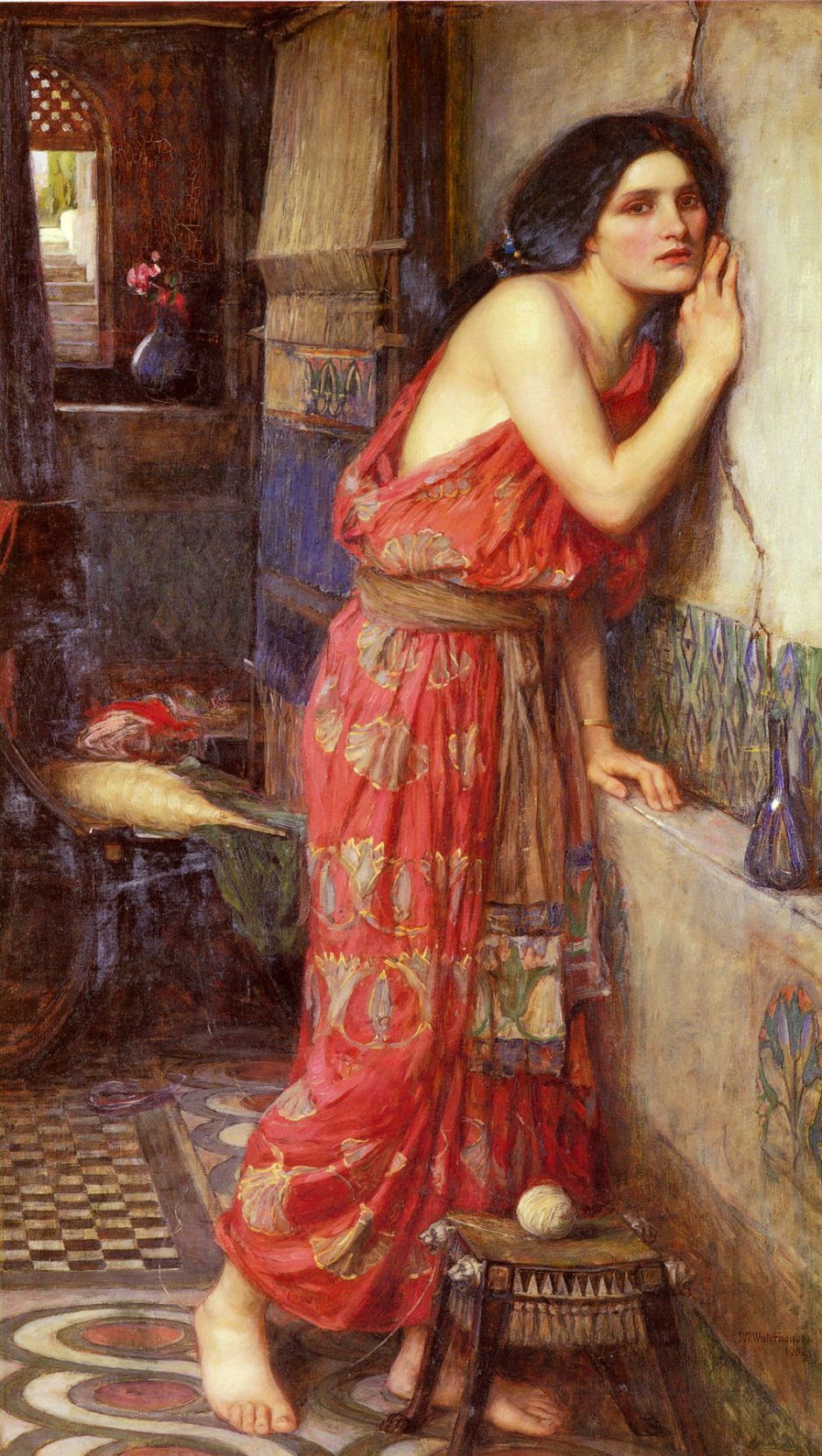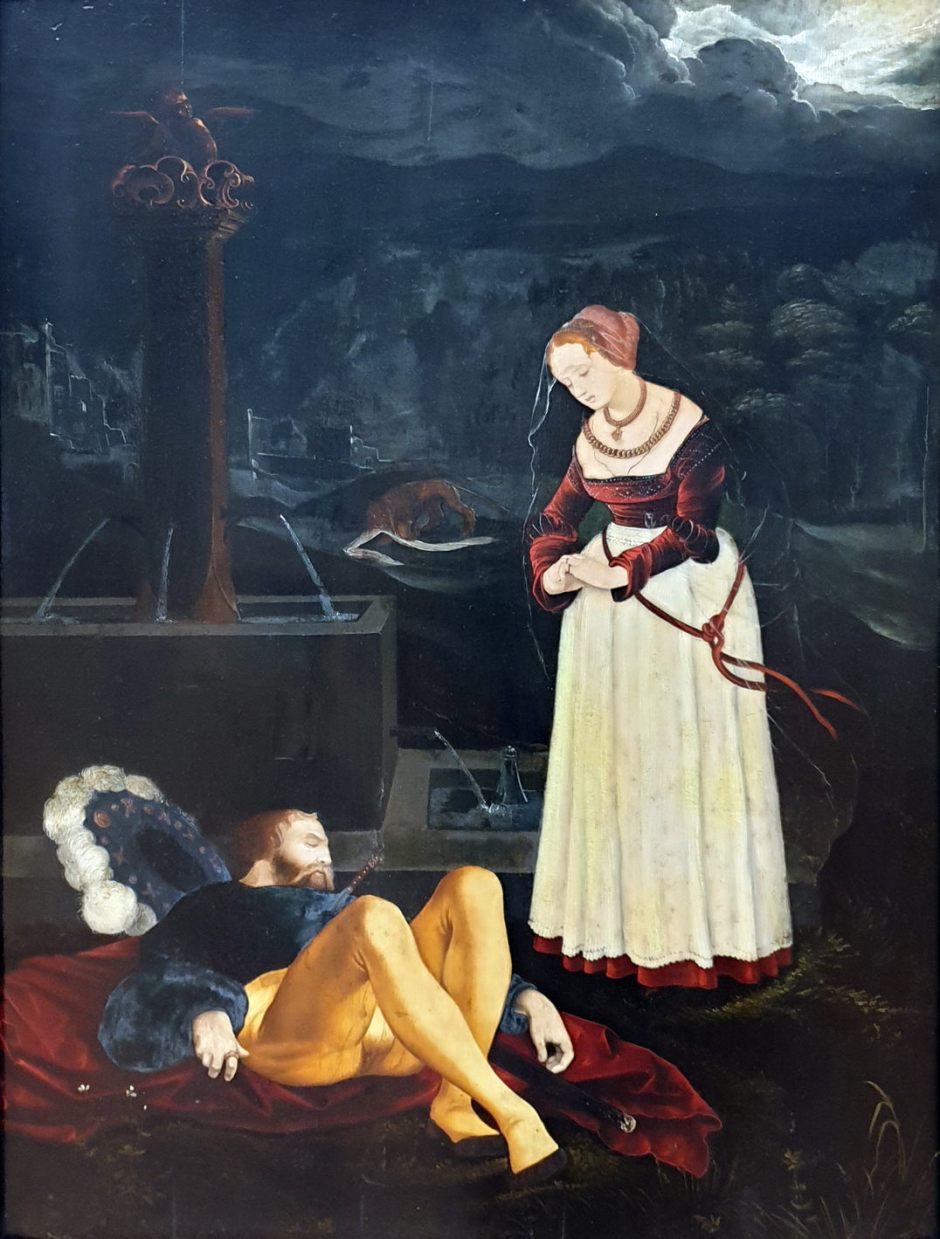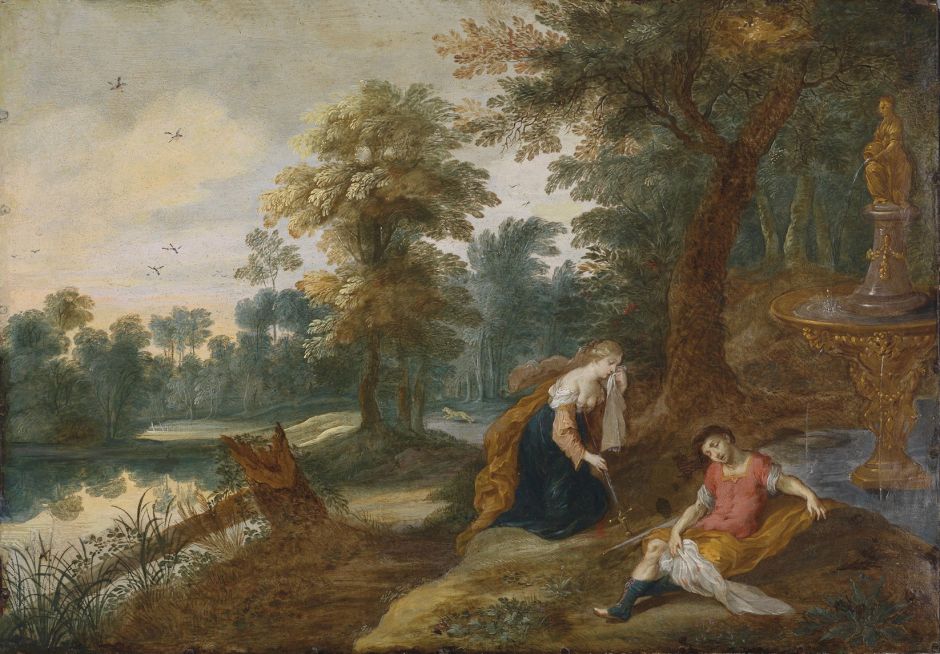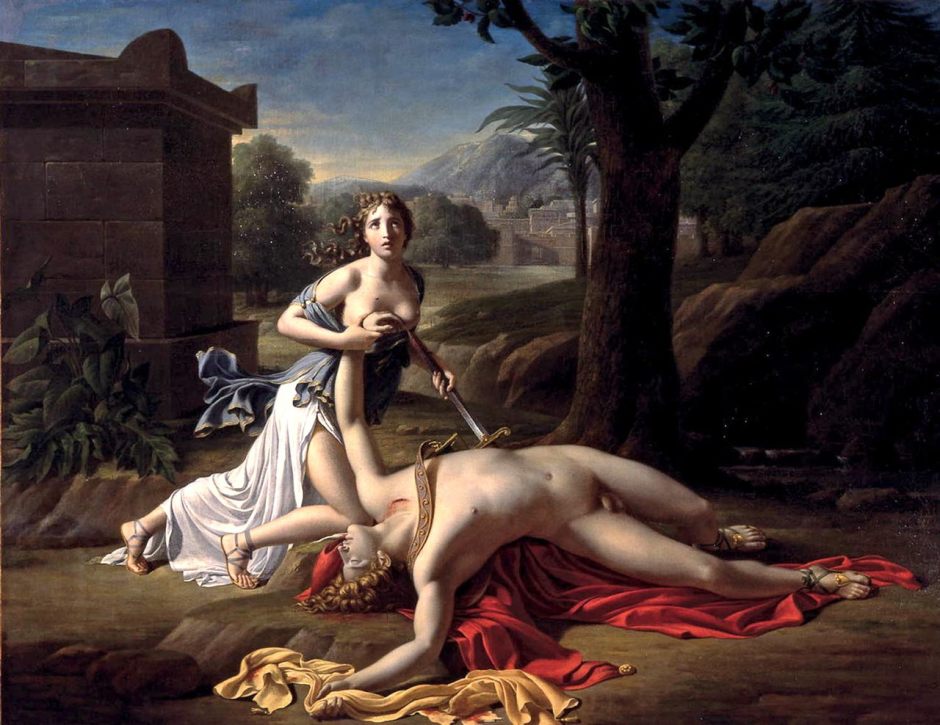Ovid makes a clean break at the start of the fourth book of his Metamorphoses by introducing a whole team of narrators, the daughters of Minyas, who take it in turns to tell us stories within their story. These women provide a link with the end of the previous book in that they live close to the city of Thebes, and like the unfortunate Pentheus they too refuse to worship Bacchus.
Their first story is novel to the Metamorphoses, and isn’t even a Greek myth; although Ovid claims it as a Babylonian legend, it’s now thought to have originated in southern Anatolia, in modern Turkey. It’s also one of the earliest stories in the Western canon to end with the suicide of frustrated lovers, making it the precursor of many major works including Shakespeare’s Romeo and Juliet, and it even appears in the play within Act 5 of his play A Midsummer Night’s Dream.
While the women of Thebes are out honouring Bacchus, the daughters of Minyas ignore that festival, and carry on at their spinning. To pass the time when they’re working, they each in turn tell a story. The first teases the reader with summaries of three that she decides not to tell, all involving transformations:
- Dercetis of Babylon, who developed scaly limbs and lived in a lake,
- the daughter of Dercetis, who grew wings and lived on a tower, and
- an unnamed Naiad, who transformed men into fish, and was eventually turned into a fish herself.
She then tells the story of how the white fruit of a tree was turned red: that of Pyramus (the man) and Thisbe (the woman). The couple lived in the city of Babylon, in houses sharing a common wall between them. They fell in love with one another, but their fathers refused to let them marry. They communicated through a crack in the party wall, talking together until nightfall.

John William Waterhouse’s Thisbe, inevitably also known as The Listener, (1909) shows her listening at the party wall, and alludes to the daughters of Minyas in her spinning gear. Its only reference to the tragic outcome is a red and white shawl, screwed up in the far corner of the room.
The couple resolved to meet outside the city, at the tomb of Nisus, after dusk, under a mulberry tree with its white fruit, as it was then.
Thisbe arrived first, but while she was sitting under the mulberry tree, a lioness came to drink at the nearby spring, her face still covered in blood from her recent kill. Thisbe fled to hide in a cave, leaving her shawl on the ground for the lioness to tear as she walked away from the spring, leaving blood on the fabric.
Pyramus arrived after the lioness had gone, but saw the animal’s footprints, and discovered the bloody and torn shawl by the mulberry tree. He immediately presumed that Thisbe had been killed by the creature, and blamed himself for putting her at risk. Draping the shawl over the tree, he kissed it, then killed himself by thrusting his sword into his side. This caused his blood to spurt high in jets, colouring the hanging mulberry fruit.
Thisbe then tentatively left the cave, and made her way back to the mulberry tree, which she found hard to recognise because she couldn’t see its white fruit.

Nicolas Poussin’s Landscape during a Thunderstorm with Pyramus and Thisbe (1651) succeeds in telling the story set in one of his finest landscapes. The city of Babylon is in the distance, along a picturesque and pastoral valley. But the peacefulness of this landscape has been transformed by the sudden arrival of a thunderstorm: the gusty wind is already bending the trees, and near the centre of the view has broken a large branch with its force. Two bolts of lightning make their way to the hills below.

In the foreground, there is frantic activity in response not only to the storm, but to the lioness that is attacking a horse, whose rider has fallen. An adjacent horseman is about to thrust his spear into the back of the lioness, while another, slightly further ahead, is driving cattle away from the scene. Others on foot, and a fourth horseman, are scurrying away, driven by the combination of the lioness and the imminent storm.
In the foreground, Pyramus lies dying, his sword at his side, and his blood flowing freely on the ground, down to a small pond. Thisbe has just emerged from sheltering in the cave, has run past the bloodied shawl at the right, and is about to reach the body of her lover. She’s clearly distraught.
Thisbe discovered her dying lover, lifted him up, and kissed him. As he died, she blamed herself for his death, and decided to join him.

Hans Baldung’s version uses a monochrome background to set the scene at night and accentuate its figures. The lioness is still skulking in the distance with Thisbe’s white shawl, near a stand of mulberry trees.
Taking her lover’s sword, Thisbe placed its point below her chest, and fell onto it.

Several paintings and mosaics showing the climax of this story are known from classical Roman times. This version from the ruins of Pompeii includes all the main cues, with the lioness in the distance, and a mulberry tree with its white fruit.

Lucas Cranach the Elder or his workshop painted this account in about 1515-20. Rather than show the blood of Pyramus, he is dressed in scarlet.

Abraham Hondius’ Pyramus and Thisbe from 1660-75 is set at night, with abundant spilt blood, and more spurting from Thisbe as she impales herself on Pyramus’s sword. Behind and to the right of her the lioness is shown making away, with red and reddened garments strewn in the foreground.

This combined landscape attributed to Jasper van der Laanen, Landscape with Pyramus and Thisbe probably from around 1615, is another faithful account. Pyramus hasn’t quite expired, and still clutches the blood-stained shawl, as Thisbe is wiping the tears from her eyes and about to fall on his sword. The lioness is more distant, and the mulberry fruit above Thisbe’s head has already changed colour to red.

By the time that Pierre-Claude Gautherot painted his version in 1799, the story had declined in popularity. He followed established tradition in a composition you can trace back to that painting in Pompeii, itself made less than seventy years after Ovid had written it.
In her last words, Thisbe asked that the couple should share the same tomb, so that they could finally rest together, and that the fruit of the mulberry tree should forever bear the mark of their deaths. Both of these wishes were respected: their parents put their ashes together in the same urn, and the gods transformed the mulberry fruit from white to red in their honour.

